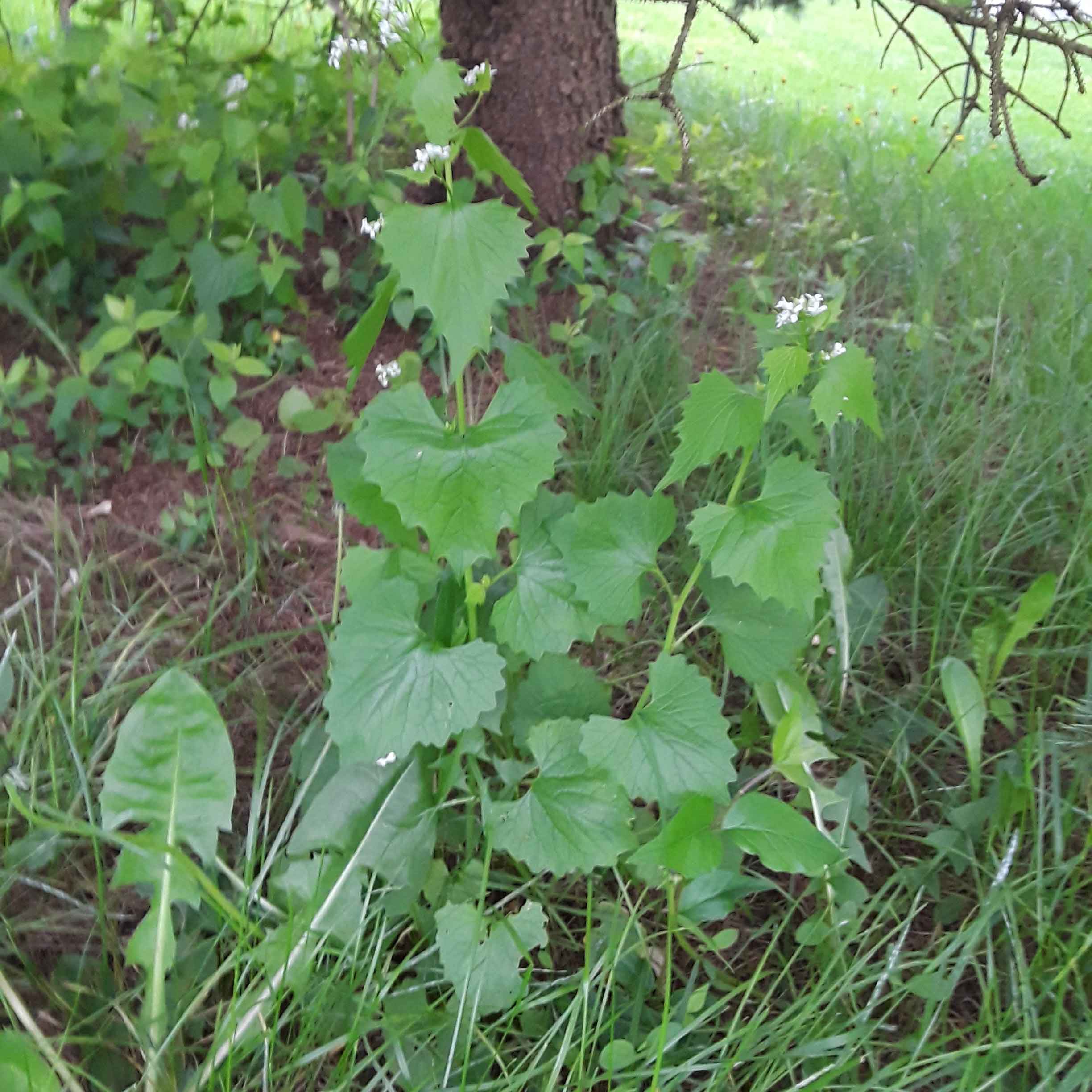Above photo by John E. Woodmansee
As we continue to progress toward national invasive species awareness week Feb. 20-26, I’m highlighting a pervasive invasive herbaceous plant found in natural areas and in some landscapes in Indiana: garlic mustard.
Garlic mustard (Alliara petiolata) can be found in public parks, backyards, meadows, forests, gardens, and along roadsides throughout Indiana. The leaves have a strong garlic smell to them. Garlic mustard was first introduced from Northeastern Europe in the 1860s in Long Island, New York. Immigrants from Europe used it for food (an herb), medicine, and erosion control. It can be spread by water, insects, wind, animals, or humans.
Here’s the kicker with garlic mustard – according to research (Kleinstein, 2001), each year one plant can produce up to 15,000 seeds that are viable for up to 5 years. (Other references mention 3,000 to 8,000 seeds). Regardless of whether it’s a few thousand to many thousand, it’s a lot of seeds. So, if you let a few garlic mustard plants go this year, you could have a “train wreck” of weeds in a few very short years, and you could be fighting those weeds for years to come. The research also states that garlic mustard has properties that may inhibit growth and the competitive ability of other plants, empowering the invasive nature of the weed. Large patches of garlic mustard also reduce light availability in spring for species growing on the forest floor.
Garlic mustard prefers shady, moist conditions, such as woodland settings, but can also grow in sunny conditions. It is a biennial, which means that vegetative growth in a “rosette” form close to the ground occurs in the first year. In the second year, it produces an erect stem with small, white 4-petaled flowers that produce seeds, then it dies. It can grow from several inches up to about 4 feet. Rosette leaves are dark green and heart-shaped, with scalloped edges. Leaves on second-year growth are more triangular, becoming more strongly toothed as the plant matures. Garlic mustard develops slender seed pods that open in the late spring/summer.
According to the U.S. Forest Service, “Garlic mustard poses a severe threat to native plants and animals in forest communities. Once introduced to an area, garlic mustard out-competes native plants by aggressively monopolizing light, moisture, nutrients, soil, and space.” The plant has no natural enemies.
So, what can be done?
Some public parks have enlisted the help of groups like Boy Scouts, Master Naturalists, and others to pull garlic mustard in spring before or near the onset of flowering (before it goes to seed). Although tedious, that is one of the best management strategies and one that homeowners can also do around their property. They are easier to pull after a rain event. Application of herbicides containing glyphosate is most effective on the first year (rosette) form in the fall. Be sure to read and follow all label instructions, and note that glyphosate will affect any plant it touches, so be cautious.
Find out more information about garlic mustard from USDA (with links to other credible sources) at https://www.invasivespeciesinfo.gov/profile/6655/resources.

Garlic mustard. Photo: John E. Woodmansee